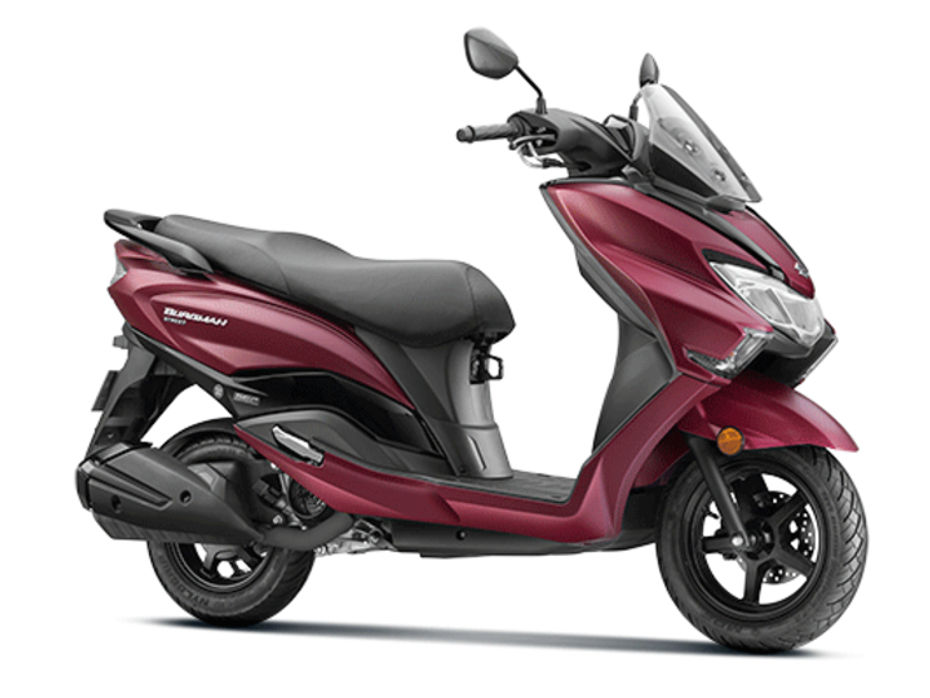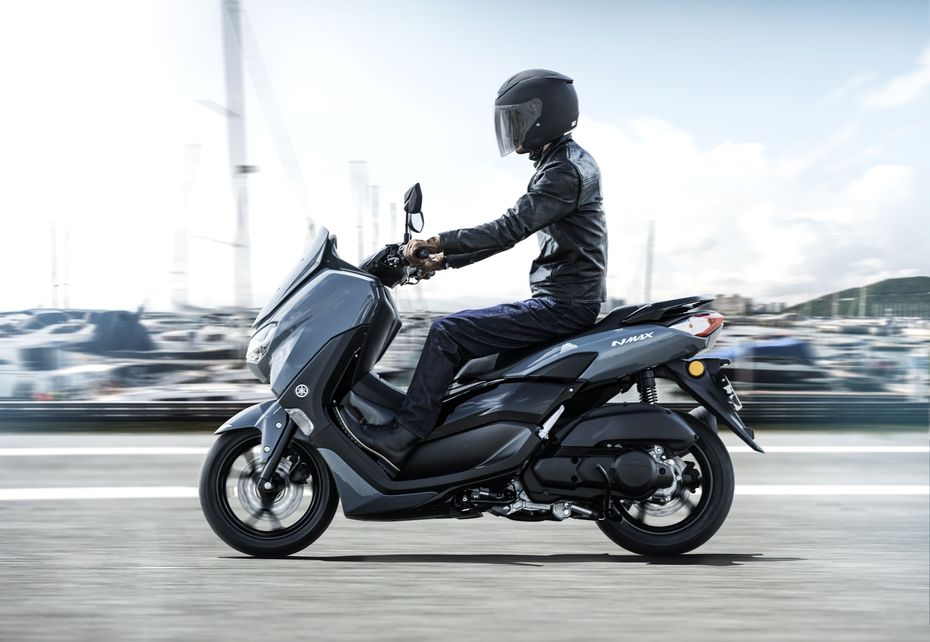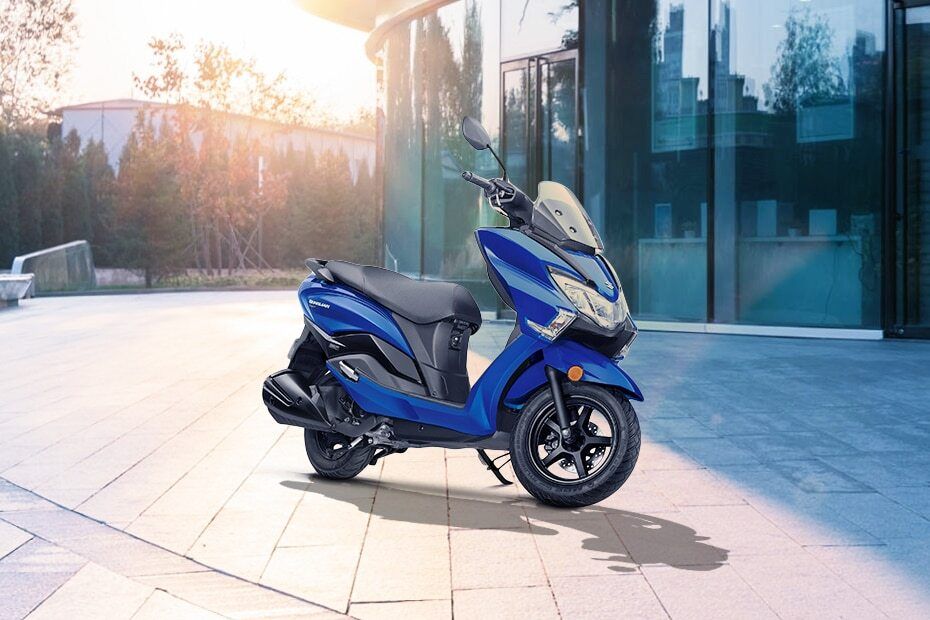
All You Need To Know About The Avenis
- Nov 19, 2021
- Views : 12057


The 2021 Yamaha NMax 125 debuted in Japan last week. The scooter comes with a bunch of updates, which got us thinking if it would fare well if launched in India. If and when it comes here, the maxi-scooter will go up against the Suzuki Burgman Street, the maxi-styled scooter that revived the segment. Here’s how the two Japanese scooters would compare:
Engine
|
Specifications |
Yamaha NMax 125 |
Suzuki Burgman Street |
|
Engine |
125cc, single-cylinder, liquid-cooled, 4-valve engine |
124cc, single-cylinder, air-cooled, 2-valve engine |
|
Power |
12.23PS @ 7,500rpm |
8.7PS @ 6,750rpm |
|
Torque |
11.7Nm @ 7,250rpm |
10Nm @ 5,500rpm |
|
Gearbox |
CVT |
CVT |
As evident from the table, the Yamaha NMax 125 certainly has the edge over the Suzuki in performance. The former derives its engine from the Yamaha MT-125, while the latter shares its unit with the Suzuki Access 125. The NMax125 even gets Variable Valve Actuation (VVA), ensuring that its top-end performance is not compromised for bottom-end grunt. That said, the simple 2-valve engine on the Burgman means cheaper maintenance and repair costs.

Underpinning
|
Specifications |
Yamaha NMax 125 |
Suzuki Burgman Street |
|
Frame |
Tubular Steel |
Underbone |
|
Front suspension |
Telescopic fork, 100mm travel |
Telescopic fork |
|
Rear suspension |
Dual shocks, 90mm travel |
monoshock |
|
Front brake |
230mm disc |
disc |
|
Rear brake |
230mm disc |
drum |
|
Front tyre |
110/70-13 |
90/90-12 |
|
Rear tyre |
130/70-13 |
90/100-12 |
Unlike a traditional maxi-scooter, the Suzuki Burgman Street gets an underbone chassis. The Yamaha’s tubular frame, on the other hand, allows the engine to be placed a bit forward, moving the centre of gravity towards the front. It also reduces the unsprung mass and improves handling to a great extent.
Suzuki has opted for the more economical setup when it comes to braking -- a disc at the front and a drum at the rear, aided by combined braking. Meanwhile, the Yamaha gets disc brakes at both ends along with ABS and traction control.

Both scooters come with telescopic suspension. But the setup at the rear is slightly different. While the Burgman gets a non-adjustable monoshock, Yamaha has equipped the NMax with 2-step adjustable dual shocks. The latter’s slightly wider and bigger tyres should also be advantageous to treading on bad roads.
Dimensions
|
Specifications |
Yamaha NMax 125 |
Suzuki Burgman Street |
|
Wheelbase |
1350mm |
1265mm |
|
Ground clearance |
135mm |
165mm |
|
Fuel tank capacity |
6.6-litres |
5.5-litres |
|
Seat height |
765mm |
780mm |
|
Kerb weight |
127kg |
110kg |
The lesser kerb weight and shorter wheelbase of the Suzuki Burgman Street should make it more agile than the Yamaha. However, the 780mm seat height on the Burgman may be a problem for shorter riders, especially in bumper-to-bumper traffic. That said, its ground clearance is excellent for Indian riding conditions. The Yamaha, on the other hand, may end up scraping its underbelly at every speed bump.
The fuel tank capacity of both scooters is pretty decent. However, the 17kg less weight than the Yamaha coupled with the simpler engine means the Burgman will likely return better fuel efficiency figures. In fact, here’s how the Burgman fared in fuel efficiency against other 125cc scooters in the country.

In terms of underseat storage, the Suzuki Burgman Street occupied the top spot in our mega 125cc scooter comparo. However, with the external fueling for the Yamaha, it will likely have more underseat space.
Features
|
Yamaha NMax 125 |
Suzuki Burgman Street |
|
|
Navigation |
No |
Yes |
|
Traction Control |
Yes |
No |
|
Keyless Ignition |
Yes |
No |
|
Idle Stop |
Yes |
No |
Yamaha has equipped the new NMax 125 with multiple features. However, some are a little gimmicky, the traction control, for instance. Even the Bluetooth connectivity on the NMax only allows the rider to see if there’s a new call or message. There’s no option to answer the call or control the music. Heck, there are no navigation alerts as well. Another premium feature on the Yamaha 125cc scooter is the keyless ignition, allowing the rider to simply turn the knob (with the key fob in the pocket) and lock or start the scooter. There’s also the idle stop technology that shuts the ignition when the scooter is idling for a certain time, saving fuel at traffic signals.
On the other hand, the Suzuki Burgman Street offers Bluetooth connectivity with navigation. Suzuki has even equipped the Burgman with an integrated start and kill switch. Unlike the NMax 125, the Suzuki Burgman Street doesn’t come with external fuelling, which compromises underseat storage.

Price And Verdict
|
Yamaha NMax 125 |
Suzuki Burgman Street |
|
Rs 2.45 lakh (JPY 3,68,000) |
Rs 86,200 (ex-showroom, Delhi) |
The simpler engine coupled with the modest features and hardware makes the Suzuki Burgman Street an affordable offering. We have tested the maxi-style scooter, and it has impressed us on all fronts, even winning our mega 125cc scooter comparo.
On the other hand, thanks to the premium features and superior engine, the NMax 125 is the dearer of the two. In fact, even if Yamaha decides to bring it here, it will likely cost around Rs 1.5 lakh, which is Rs 15,000 more than the Aprilia SXR 160.
Would you pick the Yamaha NMax 125 over the Suzuki Burgman Street? Let us know in the comments.


All You Need To Know About The Avenis

BREAKING: Suzuki’s Sportiest 125cc Scooter Is Here!

Slay the Dirt With This Sick Suzuki SV650 Street Tracker, Watch The...

Suzuki Burgman Street 125 vs TVS NTorq 125: Comparison Road Test...

Suzuki Burgman Street vs Honda Activa 125: Spec Comparison

Suzuki Access 125 vs Burgman Street 125 - What's The Difference?

Yamaha Cygnus Gryphus Takes On The TVS NTorq 125 Race XP On Paper

TVS NTorq vs Aprilia SR125 vs Suzuki Access - Which is the best 125cc...

TVS NTorq vs Aprilia SR 125 : Which is the best sporty scooter? +...

TVS NTorq vs Suzuki Access vs Aprilia SR 125: Road Test Comparison...
 Honda Activa 6G
Honda Activa 6G
![Honda Activa 125 [2019-2024] Honda Activa 125 [2019-2024]](https://images.zigcdn.com/images/spacer.png) Honda Activa 125 [2019-2024]
Honda Activa 125 [2019-2024]
 TVS NTORQ 125
TVS NTORQ 125
 Aprilia SR 125
Aprilia SR 125
 Suzuki Access 125
Suzuki Access 125
India's largest automotive community
 Suzuki Hayabusa
Rs. 16.90 Lakh
Suzuki Hayabusa
Rs. 16.90 Lakh
 Suzuki Gixxer SF
Rs. 1.47 Lakh
Suzuki Gixxer SF
Rs. 1.47 Lakh
 Suzuki Gixxer
Rs. 1.37 Lakh
Suzuki Gixxer
Rs. 1.37 Lakh
 Suzuki Gixxer 250
Rs. 1.98 Lakh
Suzuki Gixxer 250
Rs. 1.98 Lakh
 Suzuki Katana
Rs. 13.61 Lakh
Suzuki Katana
Rs. 13.61 Lakh
 TVS NTORQ 125
Rs. 86,841
TVS NTORQ 125
Rs. 86,841
 TVS Jupiter
Rs. 74,691
TVS Jupiter
Rs. 74,691
 Honda Activa 6G
Rs. 78,684
Honda Activa 6G
Rs. 78,684
 Suzuki Access 125
Rs. 81,700
Suzuki Access 125
Rs. 81,700
 Honda Activa 125
Rs. 94,422
Honda Activa 125
Rs. 94,422